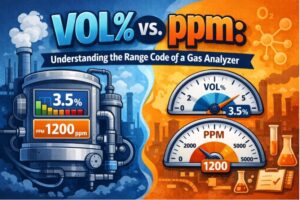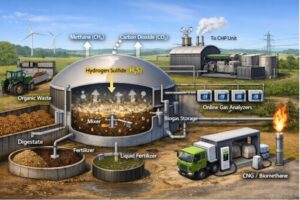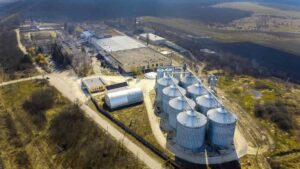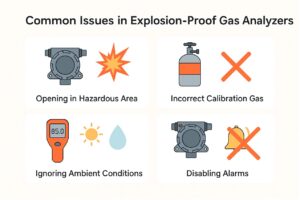Boost the performance of your project with the integration of gas sensor modules. Delve into the types of sensors, learn how to choose the right one, and follow a comprehensive guide on their integration.
Discover advanced techniques and proper maintenance to ensure optimum longevity and reliability.
Types of Gas Sensor Modules!
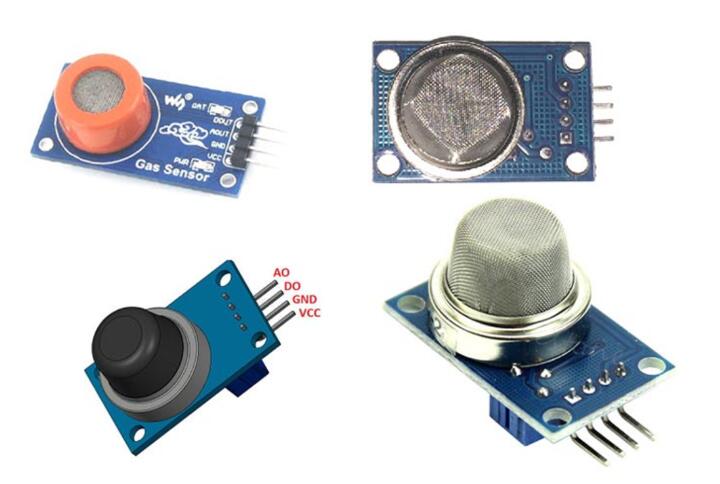
Explore essential gas sensor modules, including electrochemical sensors, infrared sensors, metal oxide semiconductor sensors, and catalytic bead sensors.
● Electrochemical Sensors
Electrochemical sensors are pivotal in gas detection. These sensors operate by allowing gases to diffuse through a porous membrane. An electrochemical reaction occurs, which generates an electrical signal proportional to the gas concentration.
The performance of such sensors is remarkable, with a response time typically less than 30 seconds. Furthermore, electrochemical sensors offer impressive accuracy with a resolution down to parts-per-million (ppm) levels.
Significantly, the selectivity of electrochemical sensors is noteworthy. Specific gases can be detected without interference from others, ensuring reliable readings. In fact, electrochemical sensors can effectively detect a wide range of gases including carbon monoxide (CO), hydrogen sulfide (H2S), and nitrogen dioxide (NO2).
However, the sensor’s lifetime is finite, typically between 2-3 years, due to the consumable nature of the electrolyte. Proper calibration is also essential to maintain precision.
● Infrared Sensors
Infrared sensors, another key type of gas sensor module, operate on the principle of infrared absorption. When gas molecules absorb infrared light, it results in molecular vibration. Different gases absorb light at specific wavelengths, allowing for precise detection.
Infrared sensors are particularly effective for gases that are strong infrared absorbers, such as carbon dioxide (CO2). One standout feature of infrared sensors is their long lifespan, which can exceed 5 years. Moreover, infrared sensors showcase minimal cross-sensitivity, ensuring accurate detection in the presence of other gases.
The operational range of infrared sensors is substantial, from low ppm to 100% gas concentration. One notable challenge is the need for a clean optical path to ensure accuracy.
● Metal Oxide Semiconductor (MOS) Sensors
Metal Oxide Semiconductor (MOS) sensors form another vital category of gas sensor modules. Here, the sensor’s resistance changes in response to the detected gas concentration.
MOS sensors are highly effective for detecting gases such as carbon monoxide (CO), nitrogen dioxide (NO2), and volatile organic compounds (VOCs). These sensors exhibit fast response times, typically less than 15 seconds.
However, MOS sensors require a power source to heat the sensor, impacting energy efficiency. Despite this, MOS sensors offer an extensive lifespan, often over 5 years. Nevertheless, environmental factors like humidity can influence sensor performance, necessitating careful calibration.
● Catalytic Bead Sensors
Lastly, consider catalytic bead sensors. Functioning on the principle of gas combustion, these sensors detect combustible gases. A typical catalytic bead sensor consists of two elements: the detector and the compensator.
The detector bead contains a catalyst that initiates combustion, while the compensator remains inert. Changes in electrical resistance are measured to identify gas presence. Catalytic bead sensors can detect a wide range of combustible gases with concentrations from low ppm up to 100%. These sensors are robust with a typical lifespan of 3-5 years.
However, exposure to certain substances, such as silicones or halogens, can poison the catalyst, affecting sensor performance. Therefore, careful handling and maintenance are essential.
| Sensor Type | Operating Principle | Response Time | Detection Accuracy | Selectivity | Lifespan | Maintenance |
| Electrochemical | Diffusion & Electrochemical Reaction | <30s | High (ppm levels) | High (Specific gases) | 2-3 Years | High (Calibration) |
| Infrared | Infrared Absorption | NA | High (Specific Wavelengths) | High (Minimal cross-sensitivity) | >5 Years | Medium (Clean optical path) |
| MOS | Resistance Change | <15s | Medium-High | Medium-High | >5 Years | High (Calibration, Energy Efficiency) |
| Catalytic Bead | Gas Combustion | NA | High (Combustible gases) | High (Specific Gases) | 3-5 Years | High (Handling, Maintenance) |
Guide On Choosing The Right Sensor For Your Application!
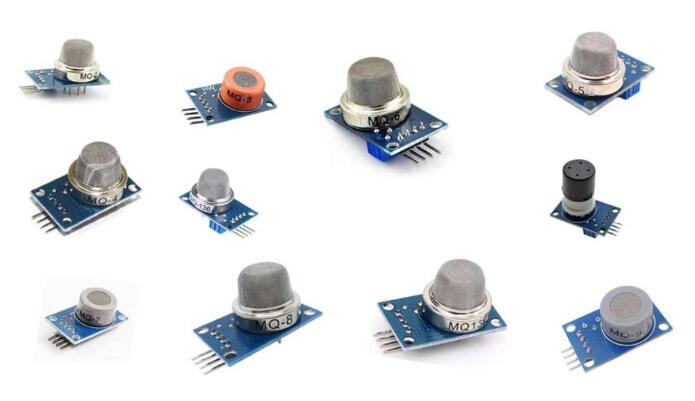
This detailed manual will guide you through key factors to reflect upon while identifying the ideal gas sensor module, guaranteeing peak performance.
1. Establish Application Prerequisites
Gas sensor modules exhibit differences in aspects like sensitivity, selectivity, and reaction time. Peak performance is achievable with sensors exhibiting a reaction time within the 10-90% bracket in 30 seconds.
Selectivity holds importance, particularly in settings with multiple types of gases. Additionally, electrochemical sensors offer a sensitivity scope of 20-2000 ppm, whereas the range for infrared sensors extends from 0.1% to 100% volume.
2. Reflect On Measurement Scope
The efficacy of gas sensor modules is directly affected by their measurement scope. For instance, electrochemical sensors offer a linear scope of 0-1000 ppm for carbon monoxide, whereas infrared sensors can gauge carbon dioxide from 0-5% volume.
It’s vital to understand that detection of gases at lesser concentrations might necessitate sensors with an extended range, such as 0-50,000 ppm for combustible gases.
3. Examine Precision And Accuracy
For dependable readings, gas sensor modules should exhibit high precision and accuracy. A sensor’s accuracy is generally expressed as a percentage of its maximum output, commonly within ±2%.
Precision is demonstrated by the sensor’s resolution, like 1 ppm for electrochemical sensors or 0.01% volume for infrared sensors. Contrast these metrics to identify the most suitable option for your task.
4. Review Environmental Conditions
Gas sensor modules operate under specific environmental conditions, such as temperature, humidity, and pressure. For instance, electrochemical sensors typically function within -20°C to 50°C temperature range and humidity levels of 15% to 90% RH.
In contrast, infrared sensors can function within a wider temperature bracket of -40°C to 60°C. Confirm the sensor you choose corresponds to your task’s environmental conditions.
5. Scrutinize Power Prerequisites
Gas sensor modules have diverse power consumption levels. Electrochemical sensors typically need between 2.7 to 5.5 VDC, while infrared sensors may require 24 VDC. Examine your task’s power prerequisites and select a sensor module that fits those needs, assuring energy efficiency and stable functioning.
6. Reflect On Signal Output
Gas sensor modules offer signals in different formats, including analog, digital, and pulse-width modulation. Analog outputs, such as 4-20 mA or 0-5 V, are frequently used in industrial settings.
Digital outputs, like I2C or SPI, facilitate easier integration with microcontrollers.
7. Dimensions And Packaging
The dimensions and packaging of gas sensor modules can influence installation and maintenance. Some sensors are compact, with dimensions as small as 20 x 20 x 6 mm, while others are larger and encased in protective casings. Assess your task’s space restrictions and select a sensor module that fits accordingly.
8. Consider Cost-Effectiveness
Striking a balance between performance and cost is essential when picking gas sensor modules. High-performance sensors might have higher initial costs but can lead to long-term savings via enhanced efficiency and reduced maintenance.
Compare the total cost of ownership, including sensor lifespan and calibration needs, to determine the most economical solution.
9. Reflect On Compatibility With Existing Systems
For a smooth integration, the gas sensor module must be compatible with your present system. Ensure that the sensor’s output format, communication protocols, and power prerequisites align with your existing infrastructure.
10. Examine Durability And Reliability
Finally, the durability and reliability of gas sensor modules are key considerations. Look into the sensor’s anticipated lifespan, calibration intervals, and resistance to environmental factors, such as temperature, humidity, and pressure. Opt for a sensor module that guarantees prolonged reliability and durability for your task.
Step-By-Step Gas Sensor Modules Integration Guide!
Here’s your guide to incorporating gas sensor modules, from understanding application requirements to interfacing with existing systems.
A. Grasping The Environment And Application Needs
Commence by evaluating the environment and application’s demands. Take note of the surrounding conditions, such as temperature and humidity, which often oscillate between -40°C to 85°C and 15% to 95% RH, respectively.
Also, identify the target gas and its concentration levels. For instance, sensors for carbon monoxide can pick up concentrations as minuscule as 20 ppm. Establish the accuracy level needed – a precision of ±10% is standard for many modules.
Consider the power demand next, with a standard gas sensor module consuming around 0.9W. Lastly, identify the ideal response time, usually between 30 to 120 seconds.
B. Picking Suitable Gas Sensor Modules
Choosing the correct gas sensor module necessitates an in-depth understanding of the application. Electrochemical gas sensors are ideal for identifying toxic gases like CO, with a sensitivity of approximately 0.2 µA/ppm.
Semiconductor gas sensors, capable of detecting gases such as methane, operate typically within 300 to 10,000 ppm.
For non-reactive gases like CO2, go for infrared gas sensors, which can measure from 0 to 5,000 ppm. Each sensor variety has a unique operating temperature, generally within -40°C to 50°C. Select based on your specific application needs.
C. Precise Placement And Installation
○ Avoiding Disruption From Other Devices
Proper positioning of the gas sensor module is critical. Keep at least 1 meter away from other electronic devices to circumvent electromagnetic disruption, which can skew readings. Keep away from heat sources too, as gas sensors usually work best at room temperature, around 25°C.
○ Maintaining Optimum Airflow
Ensure sufficient airflow for accurate operation of gas sensor modules. The airflow rate should be between 0.5 to 1.0 L/min. Avoid installing the sensor in areas with stagnant air or limited space, which can distort readings.
D. Calibration And Adjustments
○ Initial Calibration
Calibration is crucial to obtain precise readings. Initial calibration is typically done in clean air, with zero concentration of the target gas. For example, a CO sensor should indicate 0 ppm in clean air.
○ Routine Calibration Checks
Routine calibrations checks help maintain the sensor module’s accuracy. Every six months is a general recommendation, but critical applications might require more frequent checks.
E. Electrical Connections And Wiring
○ Power Supply Factors
A stable power supply is key to the gas sensor module’s accurate functioning. Most work within a voltage range of 2.7 to 3.3 V DC. Fluctuations in power supply could affect sensor readings.
○ Signal Refinement And Processing
Refining the sensor’s output via signal conditioning is necessary. This process includes amplifying, filtering, and converting the raw signal into a more acceptable form for processing. The enhanced signal generally falls within 0.4 to 2 V, a safe range for most microcontrollers.
F. Bridging Gas Sensor Modules With Microcontrollers Or Alternate Control Systems
○ Command Channels
Setting up a connection between the gas sensor module and a microcontroller necessitates the use of specific protocols.
Predominantly, protocols such as I2C, SPI, and UART are employed in such situations. The data transfer speeds these protocols accommodate can fluctuate, commonly falling within 100 kbps to 4 Mbps.
○ Synchronization With Pre-Existing Control Mechanisms
Incorporating the gas sensor module into a pre-existing control mechanism calls for meticulous strategizing. A crucial aspect to consider is ensuring the power supply of the system, typically between 3.3 to 5 V DC, is compatible with the module.
Subsequently, the selected command channel must coincide with the control system’s protocol. Furthermore, the control system’s input range must be congruent with the output range of the sensor, generally within 0.4 to 2 V.
Troubleshooting and Maintenance for Gas Sensor Modules!
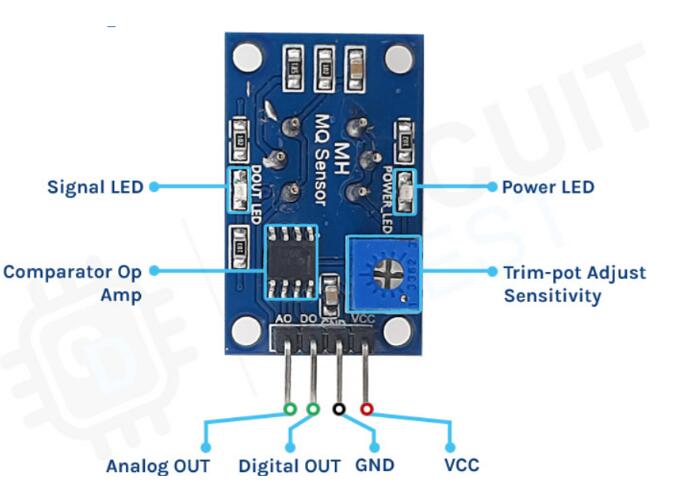
A. Common Issues And Their Solutions
- False Alarms: Adjust the sensor’s sensitivity setting. High sensitivity might trigger false alerts.
- Slow Response Time: Check the sensor’s filter. Dust accumulation can slow down response time.
- Erratic Readings: Ensure the sensor is correctly calibrated. Miscalibration can cause fluctuating readings.
- No Response: Verify the power supply. Faulty connections can lead to an unresponsive sensor.
- Inaccurate Measurements: Analyze the ambient conditions. High humidity or temperature can affect accuracy.
B. Routine Maintenance Tasks
- Regularly clean the sensor’s filter to avoid dust buildup.
- Check the power connections to prevent any disruptions.
- Monitor battery usage to extend its life.
- Always maintain optimal ambient conditions for accurate measurements.
- Keep the firmware of the sensor updated for optimal performance.
C. Recognizing Signs Of Sensor Degradation
Noticing signs of sensor degradation is crucial. Look out for inconsistent readings. If a sensor provides readings that fluctuate significantly, degradation might be the cause.
Similarly, slow response times can indicate sensor wear. Dust and debris accumulation can slow down sensor responsiveness over time.
Short battery life can also be a sign of sensor degradation. High power consumption often accompanies sensor wear. Notice if there are frequent false alarms.
A degrading sensor might become overly sensitive, triggering false alarms more often. Lastly, observe any changes in the sensor’s physical condition. Visible damage or wear can be a clear indicator of sensor degradation.
D. When To Replace Gas Sensor Modules
Replacement becomes necessary when degradation signs persist even after troubleshooting and maintenance. If a sensor still shows inconsistent readings or slow response times, consider replacement. Likewise, if frequent false alarms continue to occur or battery life doesn’t improve, it’s time for a new sensor.
Also, if physical damage is evident or the sensor’s performance doesn’t improve with firmware updates, replacement is advisable. Always prioritize safety and accuracy in gas detection.
FAQs!
Q: What’s A Gas Sensor Module?
A: In essence, a gas sensor module is a vital instrument responsible for identifying gases in its surroundings. Standard modules can gauge concentrations as little as 1 ppm up to 10,000 ppm.
Each module employs a distinct gas detection technique such as electrochemical, infrared, or metal oxide semiconductor. Power needs for these modules oscillate between 2.7V and 5.5V, contingent on the specific model.
Q: Where Are Gas Sensor Modules Used?
A: Gas sensor modules feature predominantly in domains such as environmental surveillance, industrial safety, and vehicular systems. Take automobiles, for instance, where these modules ascertain emission compliance, thus ensuring adherence to strict emission norms.
Q: How Does Gas Sensor Module Integration Enhance Performance?
A: Indeed, meticulous integration of gas sensor modules can yield substantial performance improvements. Successful integration guarantees adequate power supply and seamless interfacing with control mechanisms. Vital parameters like voltage, current, and signal frequency warrant careful consideration during integration.
Q: What Factors Matter In Gas Sensor Module Installation?
A: The installation process of a gas sensor module is crucial and depends on several factors. These include the environment, power supply, placement, and calibration, each playing a pivotal role.
Q: Why And How Often Should Gas Sensor Modules Be Calibrated?
A: It’s imperative to routinely calibrate gas sensor modules to ensure precision in readings. The calibration frequency fluctuates based on the usage and the specific gas detected. In a typical industrial environment, calibration is usually done yearly.
Q: What To Consider For Gas Sensor Module Wiring?
A: When wiring gas sensor modules, one needs to consider voltage levels, the type of wire, and shielding. Proper wiring is essential to enable efficient communication between the sensor and the controlling mechanism.
Q: How To Interface Gas Sensor Modules With Control Systems?
A: For gas sensor modules, interfacing with control systems is paramount. These control systems decipher signals from the sensors and initiate suitable responses. Common interfacing protocols include I2C, SPI, and UART.
Q: How To Maintain Gas Sensor Modules For Longevity?
A: Longevity of gas sensor modules hinges on regular maintenance. Frequent calibration, thorough cleaning, and routine inspections are vital maintenance practices.
Q: What Techniques Can Enhance Gas Sensor Module Performance?
A: Optimization of gas sensor module performance can be achieved through several strategies. These include routine calibration, protection from electrical disturbances, and maintaining an ideal operating temperature.
Q: How Does Machine Learning Apply To Gas Sensor Modules?
A: Machine learning can considerably amplify the efficiency of gas sensor modules. Machine learning algorithms can scrutinize sensor data and make predictive analyses, such as forecasting potential sensor failures or identifying calibration needs.
Conclusion
Gas sensor modules are critical in various industries. Their successful integration is paramount to achieving optimal performance. Understanding different sensor types, selecting the right one, and ensuring proper installation are the first steps.
Further enhance performance with advanced techniques, maintain their functionality, and troubleshoot effectively. With the right knowledge and tools, you can elevate your project, leading to greater efficiency, safety, and reliability. To learn more contact ESEGas now!




